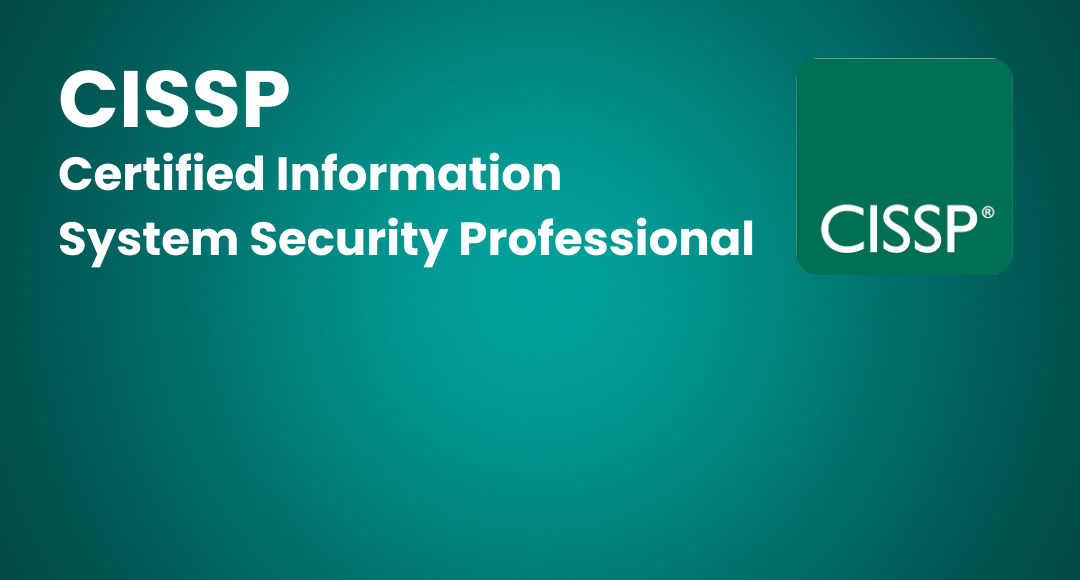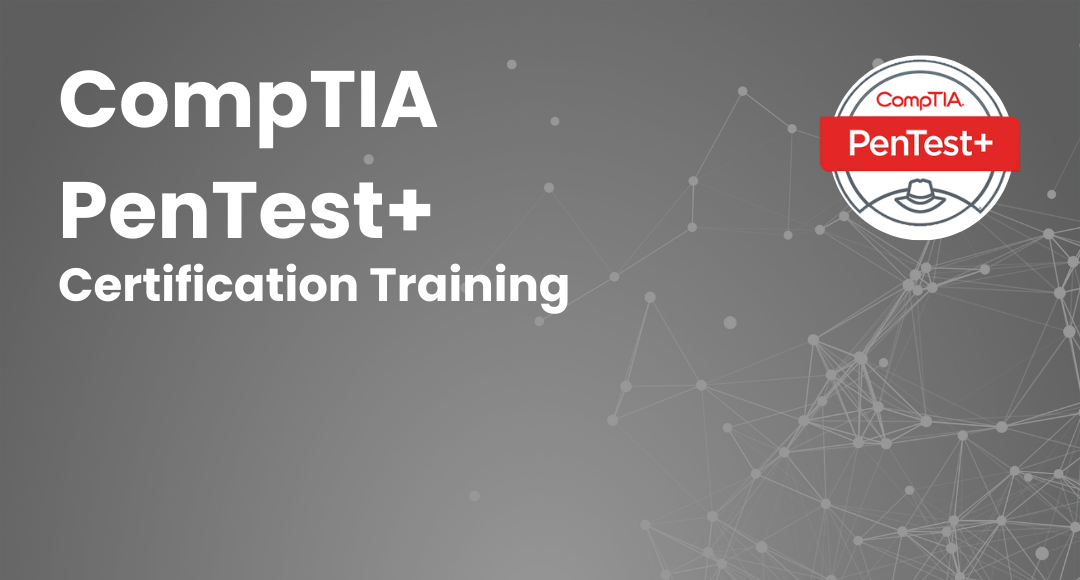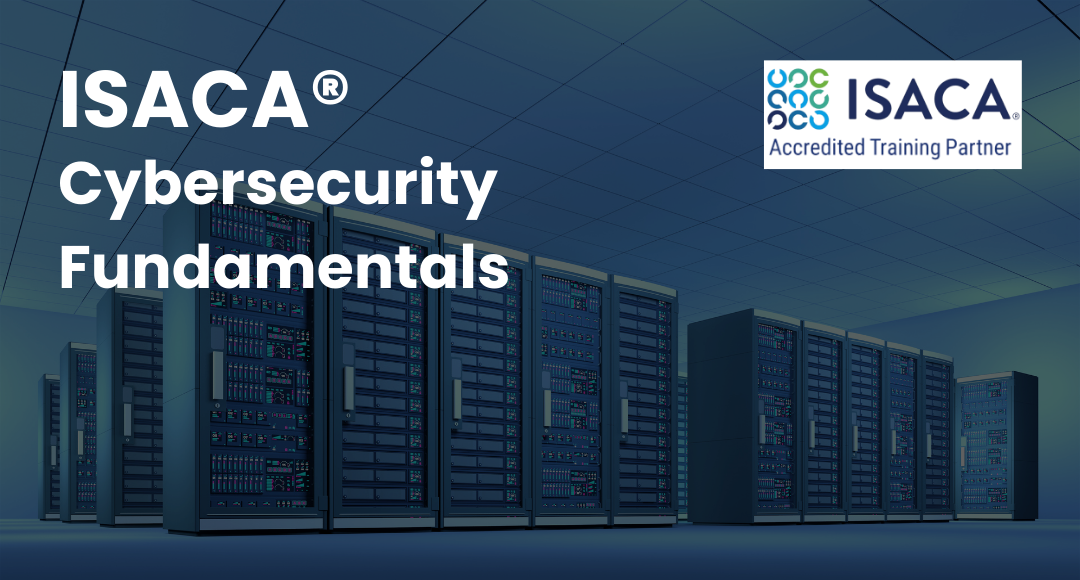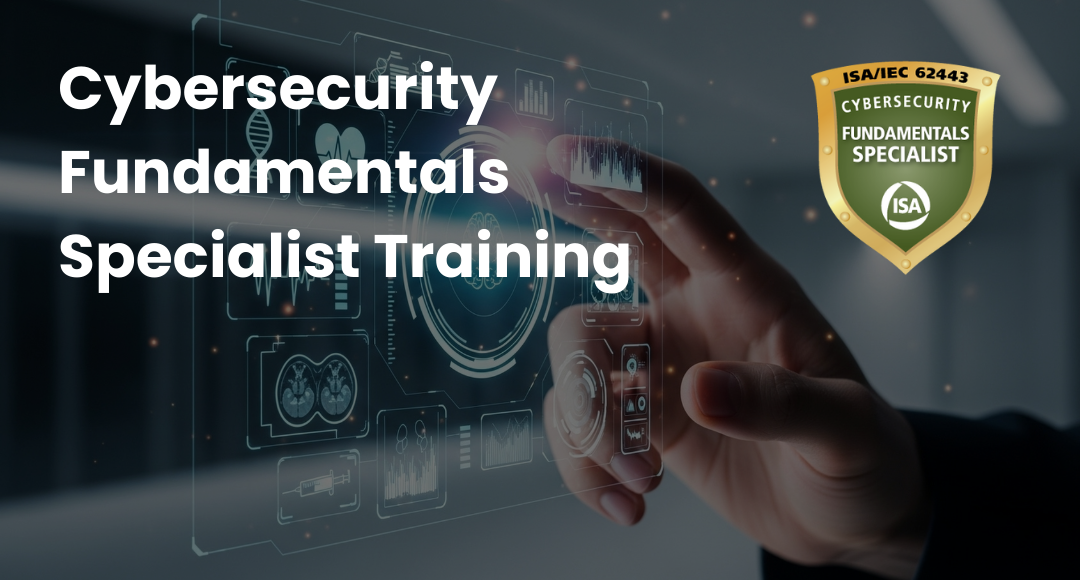A Comprehensive Guide to Building Risk-Based Internal Audit Plan
-
 By Sushmith
By Sushmith - Published on Dec 19 2023

Table of Contents
- How Risk-Based Audit Plans Change the Game?
- Essential Tools for Building Your Internal Audit Plan
- Steps to Designing the Perfect Audit Plan
- Powerful Implementation Strategies and Techniques
- Maximizing Results and Building a Culture of Risk Awareness
- The Future of Risk-Based Auditing
- Mitigate Risks like a Pro with Sprintzeal’s Training
- FAQs
- Conclusion
How Risk-Based Audit Plans Change the Game?
Traditional Risk-based Audit Planning have been conducted in a rather random fashion, with auditors chasing risks based on gut feeling or past experiences. This approach, while well-intentioned, can be ineffective, leaving critical areas vulnerable and failing to address the evolving risks.
Unlike their traditional methods, risk-based plans don't waste time on generic checklists. Instead, they focus on the specific risks that hold an impact to your organization's objectives. This targeted approach improves efficiency, delivers insights, and prioritize resources that make informed decisions.
But how exactly do risk-based audit plans change the game?
Identify and prioritize critical risks: By analyzing your organization's objectives, operations, and external environment, you can pinpoint the risks that pose the greatest threat to achieving your goals.
Allocate resources strategically: No longer limited by a rigid audit plan, you can direct your valuable resources towards addressing the most pressing risks, ensuring maximum impact.
Gain deeper insights: Beyond surface-level observations, risk-based auditing encourages a deeper analysis of underlying causes and potential consequences, leading to more informed decision-making.
Foster a culture of risk awareness: By proactively addressing risks and promoting a risk-conscious culture, you can create a more resilient and adaptable organization.
In short, risk-based auditing isn't just a change in approach, it's a transformation in the way you manage your organization's risk profile.
Essential Tools for Building Your Internal Audit Plan
Just like any complex project, you need the right tools in your arsenal to achieve success. These tools help secure your resources against risk. Each one plays a specific role in helping you identify, assess, and mitigate potential threats. Here are some essential tools to empower your audit plan:

1. Risk identification tools:
- Risk assessment frameworks: Frameworks like COSO ERM and ISO 31000 provide structured methodologies for identifying and evaluating risks across your organization.
- Data analysis tools: Leveraging data analytics software can help you uncover hidden patterns and trends, leading to the identification of previously unknown risks.
- Process mapping and flowcharts: Visually mapping your organization's processes can help you pinpoint potential vulnerabilities and control weaknesses.
2. Risk assessment tools:
- Risk matrices: These matrices help you evaluate the likelihood and impact of identified risks, allowing you to prioritize your efforts.
- Qualitative and quantitative risk assessment techniques: Combining qualitative methods (such as expert judgment) with quantitative methods (such as historical data analysis) provides a more comprehensive understanding of risk.
3. Audit planning tools:
- Audit planning templates: Templates can provide a helpful starting point for structuring your audit plan and ensuring you don't miss any critical steps.
- Audit management software: Specialized software can streamline your audit process, automate workflows, and improve collaboration among team members.
4. Risk mitigation tools:
- Control matrices: These matrices help you identify, assess, and implement controls to mitigate identified risks.
- Action plan templates: Templates can help you structure and track your risk mitigation activities, ensuring they are implemented effectively.
- Communication templates: Effective communication is crucial for gaining buy-in from stakeholders and ensuring successful implementation of risk mitigation strategies.
Remember, these are just some of the many tools available. The specific tools you choose will depend on your organization's size and risk profile.
Steps to Designing the Perfect Audit Plan
With your risk-based auditing tools fully stocked, it's time to craft the perfect audit plan. Remember, there's no one-size-fits-all approach, but following these key steps will serve as the roadmap to address your organization's needs. Here are the key steps involved:

1. Define your audit objectives:
- What do you hope to achieve with your audit?
- Are you aiming to improve compliance, identify and mitigate risks, or enhance operational efficiency?
- Clearly defined objectives will guide your audit scope and ensure you focus on the most critical areas.
2. Identify and assess risks:
- Employ the tools you gathered in the previous section to systematically identify and evaluate potential risks across your organization.
- Remember to consider both internal and external factors, such as regulatory changes, economic conditions, and technological advancements.
3. Prioritize risks:
- Not all risks are created equal. Use risk matrices or other prioritization techniques to identify the most critical risks that require immediate attention.
- Allocate your resources strategically to address these high-impact risks first.
4. Define the audit scope:
- Based on your risk assessment, determine which areas and processes will be included in your audit.
- Ensure the scope is comprehensive enough to address identified risks but not so broad that it becomes unwieldy.
5. Develop an audit plan:
- This is where your plan comes to life.
- Create a detailed schedule outlining the audit's timeline, resources needed, and specific procedures to be performed.
- Include clear roles and responsibilities for each team member involved.
6. Communicate the plan:
- Effective communication is vital for ensuring everyone involved is aware of their roles, responsibilities, and expectations.
- Communicate the audit plan to key stakeholders, including senior management, department heads, and audit team members.
7. Obtain approval:
- Once the plan is finalized, seek approval from the appropriate authority, such as the audit committee or board of directors.
- This ensures your plan aligns with organizational goals and objectives.
8. Adapt and iterate:
- No plan is perfect. Prepare to adapt and modify your approach based on emerging information and changing circumstances.
- Continuous improvement is the key to maintaining an effective and responsive risk management program.
Powerful Implementation Strategies and Techniques
Implementing your risk-based audit plan effectively requires a combination of strategic thinking and practical execution. Here are some powerful strategies and techniques to ensure your plan achieves its intended goals:
1. Build a strong team:
- Assemble a team of highly skilled and experienced individuals with expertise in risk management, auditing, and the specific areas under audit.
- Encourage collaboration and communication among team members to leverage diverse perspectives and maximize the impact of your audit.
2. Conduct effective interviews:
- Interviews are crucial for gathering insights and information from key stakeholders.
- Prepare targeted questions, actively listen to responses, and probe for underlying details to gain a deeper understanding of risks and control weaknesses.
3. Perform thorough documentation reviews:
- Analyze relevant documents, policies, and procedures to identify potential gaps or inconsistencies in risk management practices.
- Use technology to streamline document review and ensure you don't miss any critical information.
4. Leverage data analytics:
- Utilize data analytics tools to identify patterns and trends in historical data, uncover hidden correlations, and enhance your risk assessment process.
- By leveraging the power of data, you can make more informed decisions and prioritize your audit activities based on concrete evidence.
5. Employ advanced audit techniques:
- Consider utilizing advanced audit techniques like continuous auditing, data mining, and continuous monitoring to enhance the effectiveness and efficiency of your audit process.
- These techniques can provide real-time insights and enable you to identify emerging risks proactively.
6. Manage risks effectively:
- Once you've identified risks, develop and implement appropriate controls to mitigate their impact.
- Monitor and assess the effectiveness of these controls on a regular basis to ensure they remain effective over time.
7. Communicate findings and recommendations clearly:
- Prepare concise and comprehensive reports summarizing your audit findings and recommendations.
- Tailor your communication to different audiences, using clear and concise language for stakeholders with varying levels of technical expertise.
8. Secure buy-in and commitment:
- Effectively communicate the benefits of your audit findings and recommendations to gain buy-in from key stakeholders.
- Secure their commitment to implementing necessary changes and ensure long-term sustainability of your risk management program.
By implementing these powerful strategies and techniques, you can transform your risk-based audit plan from words on paper into a thriving risk management framework that protects your organization and drives its success.
Maximizing Results and Building a Culture of Risk Awareness
With your risk-based audit plan effectively implemented, you're on the right track to mitigating risks and achieving your organizational goals. However, to truly maximize your results and create lasting change, you need to focus on two key areas:
Maximizing results:
- Track progress and measure impact: Regularly monitor the implementation of your recommendations and track progress towards achieving your risk management objectives.
- Quantify benefits: Assess the financial and non-financial benefits of your risk management program, such as reduced costs, improved efficiency, and enhanced reputation.
- Share success stories: Showcase the positive impact of your risk management program through success stories and case studies to build buy-in and encourage continued commitment.
- Continuously improve: Regularly review and update your risk-based audit plan based on new information, emerging risks, and changing organizational priorities.
Building a culture of risk awareness:
- Promote risk awareness training: Educate employees at all levels about their roles and responsibilities in identifying, reporting, and mitigating risks.
- Encourage open communication: Foster a culture where employees feel comfortable discussing risks and concerns without fear of reprisal.
- Lead by example: Set the tone from the top by demonstrating a strong commitment to risk management principles and ethical behavior.
- Recognize and reward risk-aware behavior: Acknowledge and reward employees who identify and report risks effectively, further reinforcing the importance of risk awareness.
- Embed risk management into daily operations: Integrate risk management considerations into decision-making processes and daily workflows to ensure it becomes an integral part of your organization's DNA.
By prioritizing both maximizing results and building a culture of risk awareness, you can create a self-sustaining ecosystem where risk identification, assessment, and mitigation become ingrained in your organization's core values and practices.
The Future of Risk-Based Auditing
The world of risk is constantly evolving, driven by technological advancements, changing regulations, and emerging threats. As such, the field of risk-based auditing must also adapt and evolve to remain effective. Here are some key trends shaping the future of risk-based auditing:

1. Artificial intelligence and automation: AI and automation are increasingly being used to streamline audit processes, analyze vast amounts of data, and identify hidden patterns and risks. This allows auditors to focus on more complex and strategic tasks, improving efficiency and effectiveness.
2. Continuous auditing and monitoring: With technological advancements, continuous auditing and monitoring are becoming increasingly feasible and valuable. This allows for real-time insights into risk levels and control effectiveness, enabling proactive risk mitigation and faster response times to emerging threats.
3. Big data analytics: Leveraging big data analytics can provide auditors with deeper insights into risk trends and correlations. By analyzing vast datasets, auditors can identify previously unknown risks and prioritize audit activities based on their potential impact.
4. Cloud-based audit platforms: Cloud-based audit platforms offer greater flexibility, scalability, and accessibility for auditors. They also facilitate collaboration among team members and enable remote access to audit data, regardless of location.
By staying informed about these trends and actively adopting new technologies and methodologies, you can ensure your risk-based audit program remains relevant, effective, and future-proof.
Mitigate Risks like a Pro with Sprintzeal’s Training
Staying ahead of the curve in the domain requires continuous learning and up-skilling. While the future of risk-based auditing presents immense potential, it also demands for professionals with advanced knowledge and practical skills. This is where Sprintzeal steps in.
Sprintzeal is your one-stop shop for all your professional career goals. We offer comprehensive courses designed and delivered by industry experts, equipping you with the practical skills and theoretical foundation to empower you to become what you want with total confidence.
Sprintzeal's Training Advantage:
- Expert-led Comprehensive Training Courses
- Latest Updated Training Curriculum
- Interactive Learning Sessions
- Customized Trailing
Investing in Sprintzeal's training is an investment in your future. Don't wait!
Top Choices just for you:
CISA® - Certified Information System Auditor
Cybersecurity Risk Assessment Specialist
Additional options for Beginners:
Cybersecurity Fundamentals ISACA®
Click here to start your risk management journey with Sprintzeal!
FAQs
Is internal audit risk-based?
Traditional internal audits often followed a checklist approach, assessing pre-defined areas. Modern internal audit, however, is shifting towards a risk-based paradigm. This means focusing on the most impactful risks facing your organization, prioritizing resources effectively, and providing deeper insights for proactive risk mitigation.
How do you conduct a risk-based audit?
Sprintzeal's training programs equip you with the knowledge and skills to conduct a successful risk-based audit. Here's a general framework:
- Define objectives and scope: Identify what you aim to achieve and what areas to audit based on your organization's risk profile.
- Identify and assess risks: Utilize tools like risk matrices and data analysis to identify and prioritize potential threats.
- Develop an audit plan: Create a detailed plan outlining the audit scope, methodology, and timeline.
- Perform the audit: Conduct interviews, review documents, and gather evidence to assess control effectiveness and risk mitigation strategies.
- Report findings and recommendations: Clearly communicate your findings, prioritize risks, and propose actionable steps for improvement.
What is the scope of a risk-based internal audit?
The scope of your audit will depend on the identified risks and your organization's specific needs. It could encompass various areas, including financial reporting, operational processes, IT systems, and compliance with regulations.
What are the four steps of the risk-based audit approach?
There are various frameworks, but a common approach includes four steps:
- Risk identification: Identify potential threats across your organization.
- Risk assessment: Evaluate the likelihood and impact of each risk.
- Risk prioritization: Determine which risks require immediate attention based on their severity.
- Control evaluation and recommendation: Assess existing controls and recommend improvements to mitigate prioritized risks.
What is an approach to implementing risk-based internal auditing?
Sprintzeal offers various training programs to help you implement risk-based auditing. Here are some key steps:
- Build a strong team: Assemble skilled professionals with expertise in risk management, auditing, and relevant areas.
- Develop a risk management framework: Establish a clear framework for identifying, assessing, and mitigating risks.
- Train your team: Equip your team with the necessary knowledge and skills to conduct risk-based audits effectively.
- Embed risk-based auditing in your culture: Foster a risk-aware culture where employees are encouraged to identify and report risks.
- Continuously improve: Regularly review and update your risk management practices to remain effective in the evolving risk landscape.
Conclusion
Traditional internal auditing, with its rigid checklists and reactive approach, no longer suffices in today's dynamic risk landscape. The future of risk-based auditing is a proactive and strategic approach that prioritizes the most impactful threats and adopts a culture of risk awareness.
By shifting your focus from compliance to proactive mitigation, you can empower your organization to adapt and thrive in the face of ever-evolving challenges.
- Identify and prioritize critical risks: No more chasing gut feelings! Data-driven analysis helps you pinpoint the most impactful threats, ensuring you allocate resources strategically.
- Gain deeper insights: Move beyond surface-level observations. Risk-based auditing encourages a thorough examination of underlying causes and potential consequences, leading to informed decision-making.
- Foster a culture of risk awareness: Proactive risk identification and mitigation create a more resilient and adaptable organization, prepared to handle any challenge.
Ready to unlock your full potential?
Enroll in our Cybersecurity Masterclass today and:
- Learn from industry veterans with real-world experience.
- Master the principles and methodologies of effective risk-based audits.
- Design and implement robust audit plans tailored to your organization's needs.
- Gain a competitive edge in the ever-changing risk landscape.
We recommend you to consider these options:
CISA® - Certified Information System Auditor
Cybersecurity Risk Assessment Specialist
These certifications equip you with industry-recognized credentials and open doors to exciting career opportunities.
Don't miss out! Subscribe to our newsletter now and never miss an update on the latest trends with Sprintzeal's insights & exclusive offers.
Subscribe to our Newsletters
Popular Programs
CISSP® - Certified Information System Security Professional
Live Virtual Training
- 4.6 (964 + Ratings)
- 5k + Learners
CISM® - Certified Information Security Manager
Live Virtual Training
- 4.4 (200 + Ratings)
- 25k + Learners
CCSP® - Certified Cloud Security Professional
Live Virtual Training
- 4.1 (964 + Ratings)
- 58k + Learners
Trending Posts
Risk-based Audit Planning Guide for Beginners
Last updated on Dec 6 2023
Evolving Cyber Threats and Vulnerabilities in Cybersecurity Risk Management
Last updated on Jul 22 2024
Demystifying Cloud-Based Cyber Attacks: A Comprehensive Guide
Last updated on Aug 17 2023
Ethical Hacking Tools: Best Ones for Cybersecurity in 2026
Last updated on Dec 26 2024
Top 10 Cyber Security Threats and How to Prevent Them
Last updated on Feb 21 2025
Mitigate the Cyber-Attack Risks with Best Cyber Security Protocols
Last updated on Nov 14 2023
Categories
- Other 69
- Agile Management 45
- Cloud Computing 56
- Project Management 172
- Big Data 66
- Business Management 88
- Digital Marketing 78
- IT Service Management 29
- Programming Language 58
- AI and Machine Learning 76
- IT Security 112
- Quality Management 78
- IT Hardware and Networking 25
- Microsoft Program 4
- Workplace Skill Building 13
- Risk Management 9
- Information Security 8
- Leadership and Management 9
- Corporate Training and Development 1
Trending Now
Top 5 Compelling Reasons To Get A Cyber Security Certification
ebookHow to Become IT Security Expert with CISSP Certification
ebookTop 20 Reasons You Should Get a CISSP Certification
ebookWhat is CISSP? – Everything about CISSP Certification Explained
ebookPass CISSP Exam - How to Clear CISSP Exam in First Attempt 2026 (UPDATED)
ebookCISSP Certification – Top 25 Career Benefits in 2026
ebookCybersecurity – Everything You Need to Know About it
ebookUpdated Google Certification Training Course list 2026
ArticleWhich Certification is best for Cybersecurity?
ebookWhich Cybersecurity Certification Should I Get First?
ebookCysa+ certification – Should you get it?
ebookList of Top Security Certifications
ArticleEasiest Security Certification to Get
ebookCISM certification cost and career benefits
ebookCybersecurity Fundamentals Explained
ebookISACA Certifications List 2026
ebookCareer Benefits of CISM Certification in 2026
ArticleList of Top Information Security Certifications in 2026
ebookCISM certification cost details
ArticleMitigate the Cyber-Attack Risks with Best Cyber Security Protocols
ebookCybersecurity Interview Questions and Answers 2026
ebookTop Cybersecurity Software Tools In 2026
ebookInformation Security Analyst - Career, Job Role, and Top Certifications
ebookCyber Security Analyst - How to Become, Job Demand and Top Certifications
ebookWhat is Data Security - Types, Strategy, Compliance and Regulations
ebookData loss Prevention in Cyber Security Explained
ebookCybersecurity Controls Explained in Detail
ebookCybersecurity Framework - A Complete Guide
ebookWhat is Cryptography - A Comprehensive Guide
ebookData Leak - What is it, Prevention and Solutions
ebookCybersecurity Career Paths Guide
ebookFuture of Cybersecurity - Trends and Scope
ebookCyber Security Careers and Outlook - 2026 Guide
ebook5 Cybersecurity Predictions in 2026 - Trends and Challenges
ebookScope for Cybersecurity in 2026 - Latest Update
ebookEthical Hacking Career: A Career Guide for Ethical Hacker
ebookApplication Security: All You Need To Know
ebookCybersecurity Roles - Top Roles and Skills to Consider in 2026
ebookHow to Get Cyber Essentials Certified
ebookTop 10 Cyber Security Threats and How to Prevent Them
ebookTop 10 Network Scanning Tools of 2026
ebookCyber Incident Response Plan: A Comprehensive Guide
ebookInformation Assurance Careers - Exploring Career Paths
ebookWhat is the Department of Defense (DoD) Directive 8140
ebookCybersecurity Mesh Architecture: What It Is and How to Build It
ebookWhat is Threat Modeling? Methodologies, Types, and Steps
ebookWhat is Digital Forensics? Types, Process & Challenges
ebookInformation Assurance Model in Cybersecurity
ebookHow to Become an Information Security Analyst Salary, Skills, and More
ArticleList of Top Department of Defense (DoD) Approved 8570 Certification Courses
ebookTop 5 Ransomware Attacks to Watch Out for in 2026
ebookJob Prospects for DoD Certified Professionals: A Pathway to Success in cybersecurity
ebook10 Biggest Data Breaches of the 21st Century
ebookWhat is a Cybersecurity Incident?-Types, Impact, Response Process and More
ebookCyber Security Planning - A Detailed Guide for Risk Mitigation
ebookWhat is Cybercrime? Exploring Types, Examples, and Prevention
ebookRecent Cyber Attacks & Data Breaches in 2026
ebookCybersecurity Strategy: Building a Strong Defense for Business
ebookCybercrime Impacts On Business: 6 Major Effects
ebook5 Types of Cyber Attacks You Should Be Aware of in 2026
ebookCloud Cyber Attacks: Causes, Types, Prevention and Protection
ebookCloud Malware: Types of Attacks and Security Measure
ebookCyber Attack Statistics and Trends to Know in 2026
ebookList Of Top Cybersecurity Threats In 2026
ebookSafeguarding Digital Domain: 10 Most Common Cybercrimes
ebookDemystifying Cloud-Based Cyber Attacks: A Comprehensive Guide
ebookPrevent Cyber Attacks: Strategies to Protect Your Digital Assets
ebookList of Top 10 Cybersecurity Careers in 2026
ebookTop 20 Cybersecurity Trends to Watch Out for in 2026
ArticleHow to Become Cybersecurity Engineer
ArticleUnderstanding Risk assessment in audit planning
ArticleFundamentals of Risk-Based Auditing: A Strategic Framework
ArticleRisk-based Audit Planning Guide for Beginners
ebookTop 8 Types of Cybersecurity Jobs and Salary Insights
ArticleRisk-Based Internal Auditing Approaches: 7 Steps to Explore
ArticleCompTIA Security+ 601 vs. 701: Understanding Key Differences
ArticleWhy and How to Perform a Risk-Based Internal Audit
ArticleRisk-Based Auditing Techniques Explained
ebookEvolving Cyber Threats and Vulnerabilities in Cybersecurity Risk Management
ArticleWhat Is Secure Access Service Edge (SASE)?
ArticleHow to Stay Cyber-Secure in Work and Personal Life (Tips and Practices)
ArticleIBM Data Breach: Is IBM Really Breach-Proof?
ArticleTarget Cyber Attack: Key Lessons from the 2013 Data Breach
ArticleLinkedIn User Data Protection Explained
ArticleCanva Data Breach: Best Lessons for Users and Businesses
ArticleHow Did Capital One Respond to Their Major Cyber Incident?
ArticleWhat Innovative Measures Did Reddit Take to Protect User Data?
ArticleHow Does Slack Respond to Security Challenges?
ArticleTwitch Data Breach: Response, Changes, and Key Takeaways
ArticleGuess What Google Did When a Employee Breached Their Firmware
ArticleEthical Hacking Tools: Best Ones for Cybersecurity in 2026
ArticleWhat Happened When Cisco Faced a Cyber Incident?
ArticleWhat Sony Did to Rebuild Trust After a Major Cyberattack
ArticleHow to Handle a Data Breach? Learn from Microsoft!
ArticleCybersecurity Mesh: A New Approach for Security Design
ArticleHow Target Turned a Cyber Crisis into a Lesson for All
ArticleDropbox Data Breach: What Companies Can Learn from It
ArticleHow JPMorgan Chase Strengthened Security After Facing Cyber Threats
ArticleThe Future of Online Security: Trends to Watch in 2026
ArticleLatest Trends in CyberSecurity
ArticleTop 12 Cyber Security Apprenticeships with High Earning Potential in 2026
ArticleEnhancing Safety and Competence in Today's Workplace
ArticlePrivacy at Your Fingertips: How iPhone Users Can Use Tools Securely
ArticleAge Matters: Understanding the Generational Gap in Online Safety Education
ArticleCybersecurity 101: Why Cybersecurity is the Hottest Career Right Now
ArticleWhy Cybersecurity Training Should Be Part of Every Professional's Career Plan
ArticleHow to Protect Your Data When Traveling to Countries Like Malaysia?
ArticleTop Online Master's in Cybersecurity Programs for Working Professionals
ArticleHow AI Detectors Strengthen Cybersecurity in Modern Networks
ArticleHow to Become a Cybersecurity Engineer: Step-by-Step Career Guide
ArticleWhy Certification in Risk and Compliance Is Critical in Today’s Financial World
Article


















